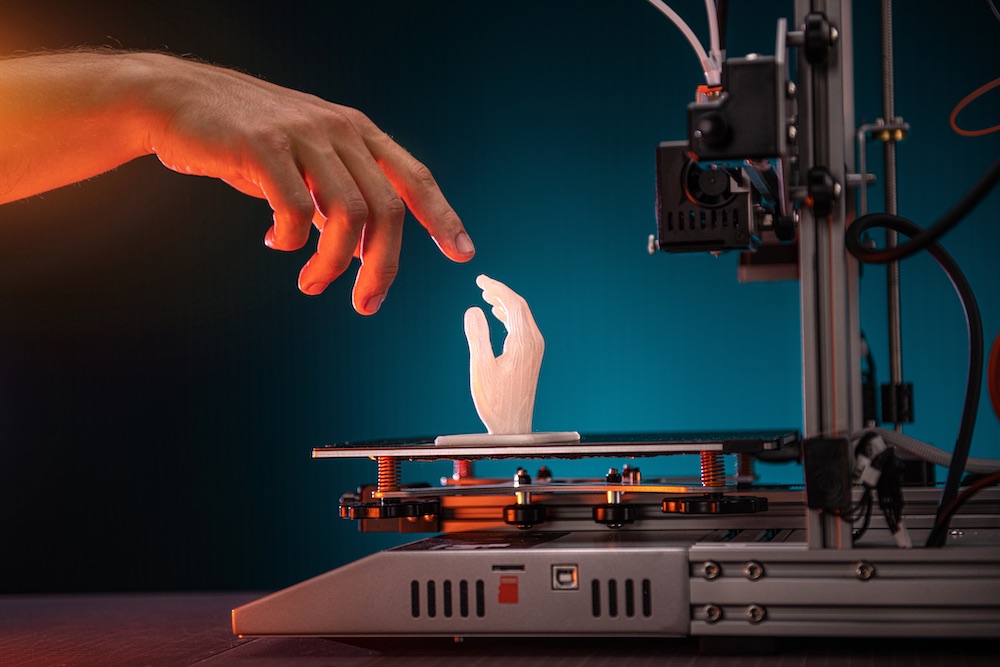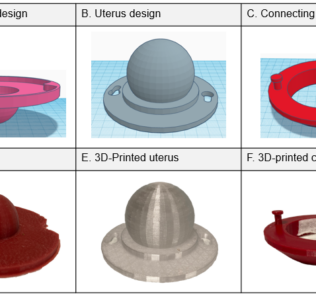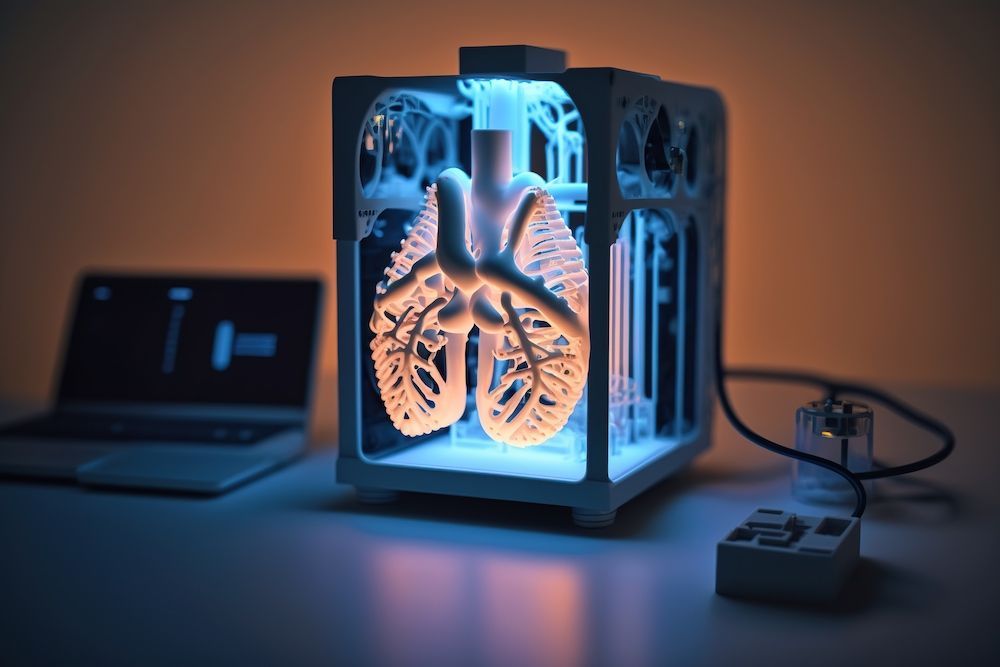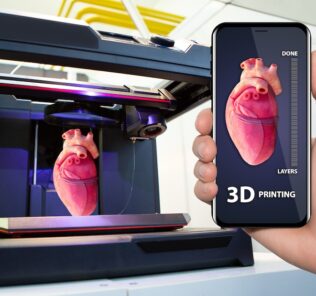3D Printing Steps to Expand Healthcare Simulation
3D Printing offers solutions to many issues identified by healthcare simulation professionals. However, the idea and plan of utilization behind 3D printing seems to be relatively new within the world of medical simulation. Some healthcare teams have capitalized on the benefits of 3D printing. Like most up and coming technology, there are still some gaps to understand where 3D Printer technology can fit within the healthcare simulation world. This HealthySimulation.com article by Eric Ayers will offer some insights into steps for healthcare simulation professionals to expand their simulations through the utilization of 3D printing.
There are many 3D printing devices available on the market and this article is not to sway the healthcare simulation team one way or another. Before one begins, there is value for one to understand the types of material available. The material changes the end result of the object printed as well as the budget. So, before purchases are made, the medical simulation team should have a solid plan of utilization, or at least ideas of what items will be printed.
The material ranges from resin to plastic, carbon fiber to metal, plus many more. Also, within each category, i.e. plastic, there are many different subtypes to add further complexities to their options. Each 3D material offers its own pros and cons: strength, flexibility, time to print, ease of use, cost, and so many more. Spend time to research material and ensure the material chosen will meet the needs of the healthcare simulation team before one moves on.
Sponsored Content:
Potential Usage for 3D Printing in Healthcare Simulation:
- Moulage
- Task Trainers (complete or partial)
- Sim Kits
- Anatomical models
- Repair of High Fidelity Simulators
- Device holders (tablets, remotes, stethoscope, monitor, etc.)
This is a small list of options, when in reality the opportunities are only limited to the medical simulation team’s imagination. However, the team must identify what will be printed to offer clarity on the type of material needed, which will make the 3D printer decision much easier.
Once the 3D printer and the materials are obtained, next comes the task of implementation within the healthcare simulation team’s operations. Just as in all new actions introduced into the current process, start to create buy-in. Now, some healthcare simulation specialists find this buy-in process easier as the “shiny object syndrome” plays into the medical simulation team’s favor. For some, new technology equals new opportunities.
Listen for excitement in the voices of those interested when the team launches this initiative. Those healthcare simulation specialists that are excited will figure out everything needed to successfully operate the 3D printer. More importantly, those same eager healthcare simulation specialists will teach others who are interested in the process as well. Through collaborative work together, a policy for utilization will be created more quickly.
Sponsored Content:
Find the right people to launch the initiative is an important part of the process because the final layer of 3D printing is the creation of the file to print. For example, if the healthcare simulation team wants to create and print an instruction sheet utilized for a specific Sim Kit. In order for the document to be created successfully, the file must be in a format to be read by the associated software, i.e. Microsoft Word document would be saved as a .docx file. The same goes for 3D printing.
3D printing utilizes STL design files, which compiles the various layers of the design into one file interpreted by the 3D printer. Some printers require their own specific file in order to actually print, which adds to the complexity of the process. This step alone can create a steep learning curve, especially if the correct healthcare simulation members are not identified early. Those that understand this process tend to offer a quicker time to creation.
As far as STL files go, there are three options (from most difficult to easiest); build the file from scratch, scan from device, or obtain a created file from an online 3D printing file library website. Building from scratch requires that the healthcare simulation technician have an overall knowledge of technological design as this is in-depth and requires multiple steps.
For the novice healthcare simulation users, one can scan from a device or grab a file previously created might be the better option. There are scanners designed for 3D printing and the complexity will equate to the cost. There are apps that can be purchased on mobile devices that could offer both ease of use as well as a cost that fits a tight healthcare simulation budget. There are many out there, so start with a search in the App Store or Google Play.
If the file is needed now and is needed to be free in order to build a case to obtain administrative buy-in, then websites such as thingiverse.com might be the place to start. Such websites offer a community of designers and creators the ability to come together and collaborate on useful products that can literally download and print on many different devices. The community found within these sites are similar to the healthcare simulation community, which are both foundational in the expansion of ideas.
Once the 3D printer and material are obtained, the healthcare simulation team (and possibly others interested) are trained, the STF is created or downloaded, the time comes to see a digital idea become physical reality. Unlike the movies, this step takes time. Depending on the size and complexity of the object being printed, it could be one hour to 36 hours.
Because of the time required to print, utilize this time to meet the healthcare simulation team’s needs; if the need is to quickly showcase usability within the healthcare simulation’s process, then grab a small STL file from online website libraries, such as an expensive broken part on a high-fidelity simulator. The next day, after the simulator has been fixed, provide a cost and time analysis to the healthcare simulation executives to demonstrate return on investment.
Once the ideas and benefits of 3D printing are made aware to the decision makers, the possibilities become endless. These endless possibilities also offer a breath within the healthcare simulation team as they now have the ability to expand their offerings by creating/printing exactly what is needed. As with all things related to healthcare simulation, have fun and go at this process with that “fun” being the motivator. Pretty soon the healthcare simulation team will meet the collective simulation needs more quickly and closer to budget, which adds to the medical simulation culture.
See More Examples of 3D Printing Files
With just under two decades of nursing experience, primarily in Pediatric Emergency and Healthcare Innovation and Simulation, Eric Ayers fell in love with the idea of learning through experience. He is the Founder and CEO of emc2, and host of Purpose Empowered Podcast. Ayers is an optimist and thought leader with a passion for inspiring all to reach an understanding of true personal potential. Leveraging his background in healthcare education with his MBA in Healthcare Administration, Ayers’ focus is to add value within organizations by illuminating value within their employees. He is also a husband, a father, an ideator, an innovator, an author, and a lover of both possibility and humanity. It is his intention to change the world through shifting perspectives.
Sponsored Content:




















